HANGING OUT: This dragonfly found refuge in grassy foliage outside the College of Charleston’s Stern Center as it waited for a Spoleto event to start. Tens of thousands of people turned out for the 17-day festival, filling streets, restaurants, bars and venues. A tip of the hat for Charleston-area residents for making them all feel welcome. (Photo by Andy Brack.)
IN THIS EDITION | June 8, 2015 | Number 7.31IN THIS ISSUE
PHOTO: Hanging out
FOCUS: President honors Folly Beach woman for innovation
BRACK: Thoughts on an old place
IN THE SPOTLIGHT: catherine e. lafond, p.a.
REAL ESTATE: Looking at how well homes are selling
GOOD NEWS: James Island library still in news
FEEDBACK: The value of development
CALENDAR: June 8+: Frank novel, Carifest, more
REVIEW: Wolf in White Van
MYSTERY: Where is this mailbox?
S.C. ENCYCLOPEDIA: All Saints Parish
TODAY’S FOCUS
President honors Folly Beach woman for innovation
By Barry Waldman
Special to Charleston Currents
JUNE 8, 2015 | Folly Beach resident Krissa Watry is inventing “The Internet of Toys.” President Obama has noticed and soon, your children are going to notice too.
Watry joined President Obama and other emerging entrepreneurs from around the world for a ceremony recognizing young innovators at the White House on May 11. Watry is CEO of James Island-based Dynepic, which is inventing “The Internet of Toys.”
Guest speakers at the event included three renowned entrepreneurs and cast members of television’s Shark Tank – Mark Cuban, Barbara Corcoran and Daymond John. Cuban and Watry spent time together at the ceremony, during which Cuban offered her some career advice, his email address and referrals to talk with one of his start-ups working on cutting edge communication protocols for smart devices that could be useful in toys.
Founded in 2011, Dynepic is a women-owned, veteran-owned business whose mission is to make toys “smart” and kids even smarter. Most everything is getting wireless-connected except toys, relegating children to the world of the two-dimensional screen. To solve this, Dynepic, a National Science Foundation company, has created a turn-key solution for toy manufacturers to easily make their toys smart.
 Once smart, they can connect them to the Internet of Toys cloud platform – a playground for smart toys that will link with secure family profiles and 3rd party content, upgrading the toys’ IQ and allowing them to learn and grow with the child, and provide a 3D entertainment experience. Dynepic is currently recruiting other toy manufacturers, cloud service providers, and game developers to join them in creating the future of play.
Once smart, they can connect them to the Internet of Toys cloud platform – a playground for smart toys that will link with secure family profiles and 3rd party content, upgrading the toys’ IQ and allowing them to learn and grow with the child, and provide a 3D entertainment experience. Dynepic is currently recruiting other toy manufacturers, cloud service providers, and game developers to join them in creating the future of play.
Krissa Watry herself has an amazing story. An Air Force Academy and MIT-educated engineer, she spent almost a decade in the aerospace sector as an Air Force officer and as a civilian designing and leading cutting-edge technology development programs for the Department of Defense, NASA, and commercial space. She even has two boxes that have docked with the International Space Station from her time leading Program Operations at Andrews Space, Inc.
Dynepic’s mission is resonating loudly in the Charleston community too. Dynepic was part of Cohort 1 of the Harbor Entrepreneurship Center (HEC) Accelerator in 2014 and it won Dig South 2014’s Wild Pitch. The company was selected to showcase the Internet of Toys on the USS Yorktown for Steve Case, AOL co-founder, during his recent Rise of the Rest tour stop in Charleston.
This White House event provided a unique opportunity to galvanize global attention on emerging women and young entrepreneurs. Watry was among 69 young innovators being honored.
COMMENTARYRemembering a special place
By Andy Brack, editor and publisher
JUNE 8, 2015 | I’m a little empty these days because of the recent sale of a place that’s been meaningful for many years.
![]() Middleburg Plantation in Berkeley County has been a sanctuary since I arrived in Charleston in 1988. Featuring the oldest wooden house (1697) south of Virginia, Middleburg transferred last week to a businessman who is expected to breathe new life into it, just as the Charleston family of a college friend did after buying it in 1980.
Middleburg Plantation in Berkeley County has been a sanctuary since I arrived in Charleston in 1988. Featuring the oldest wooden house (1697) south of Virginia, Middleburg transferred last week to a businessman who is expected to breathe new life into it, just as the Charleston family of a college friend did after buying it in 1980.
This past Saturday, a few days after the 325-acre plantation sold, I returned a key to the front door that I thought was lost, but found on a key ring on a last visit on May 31. I showed my daughters the window where a British general scratched his name when his troops occupied the plantation during the Revolutionary War. I showed them an upstairs room where a girl about their ages etched a window to show she lived in the room from 1898 to 1902.
I took a picture of my daughters sitting at a round, leather-inlaid table where I wrote a never-published mystery novel in 1996 when I spent months living at the plantation. In between writing and editing back then, I cut lots of grass around the house and the then-guitar shaped garden left over from the 19th century.
I took another photo of my wife smiling and leaning on a porch column, just as she did 15 years ago in a wedding dress before our June wedding. In the background was the field where caterers set up a big tent for our reception. (Boy, it was h-o-t on that day.)
The four of us walked a grassy path to the Cooper River, where we saw hundreds of dragonflies darting this way and that in big, open fields. After a pond came a decaying toll house where owners used to collect fees from other farmers who processed rice in a mill designed and built by resident Jonathan Lucas almost 200 years ago. He made a fortune building similar mills all over the world. Now, all that is left at Middleburg is a big chimney and rusting iron machinery near the water’s edge.
For years, Middleburg has been a place of respite, a place where I was fortunate enough to be able to visit periodically, relax, sit on a porch, drink a beer and get away from development. While it was very quiet from things like cars, sirens, planes and modern conveniences, there always was sound — the buzzing of bugs, the bleats of frogs, the whoosh of wind through massive oaks.
One evening in 1996 when I was living at the plantation, I saw a pair of headlights coming down the long driveway along the oak allee. It was dark. It was kind of creepy. By chance, all of the lights off in the house because I was watching TV in the dark.
The whole thing seemed odd. People didn’t stop by after dark without phoning I hadn’t ever had nighttime visitors. And they certainly didn’t chug-chug-chug along slowly. The folks in what turned out to be a battered brown pickup truck just looked like they were up to no good.
The only weapon I had was surprise. So when they rounded the driveway almost at the front steps, I flipped on every light in the place. The truck stopped abruptly. I saw two good-ole-boys in the truck.
“Evening, may I help you fellows?” I asked.
“We looking for our deer dogs. You seen ‘em?” the driver furtively asked.
“Nope, but if you give me your phone number, I’ll call …”
I didn’t even get to finish the sentence. The man said, “That’s alright” and headed out. He reached the roadway much more quickly than when he arrived.
I went back inside the old farmhouse where the lights were blazing. I sat down. I took off my ball cap and scratched my head, wondering what in the world had happened. Then I looked down at the hat, which had been a present. It had a big white star on it and said, “Department of Justice” above the star and “United States Marshal” below the star.
Yep, the boys must have thought I was a fed. The word must have spread pretty quickly, too, because I got no nighttime visitors for the rest of the year that I lived at Middleburg.
Make sure you have a quiet place that you can visit and center yourself. If you’ve got a suggestion for a new one for me, let me know.
Andy Brack is editor and publisher of Charleston Currents and Statehouse Report.
IN THE SPOTLIGHTcatherine e. lafond, p.a.
 Attorneys Catherine E. LaFond and Ashley Andrews and their competent team offer compassion and broad experience in helping clients with real estate closings, estate planning, and securing veterans’ benefits and other long-term care benefits. Located at 544 Savannah Highway near Folly Road, catherine e lafond, p.a., is convenient for appointments with helpful staff members who can help you and your family craft wills and trusts, weave comfortably through the maze of estate and elder law planning options, and close real estate loans for refinancing or purchases.To learn more, contact catherine e. lafond, p.a., at 843.762.3554.
Attorneys Catherine E. LaFond and Ashley Andrews and their competent team offer compassion and broad experience in helping clients with real estate closings, estate planning, and securing veterans’ benefits and other long-term care benefits. Located at 544 Savannah Highway near Folly Road, catherine e lafond, p.a., is convenient for appointments with helpful staff members who can help you and your family craft wills and trusts, weave comfortably through the maze of estate and elder law planning options, and close real estate loans for refinancing or purchases.To learn more, contact catherine e. lafond, p.a., at 843.762.3554.
- Visit online at LaFondLaw.com.
Local residential real estate market is going gangbusters
By Doug Holmes, contributing editor
Editor’s note: Local Realtor Doug Holmes provides a monthly analysis of the Charleston real estate market that always includes interesting insights. With this issue, he’ll share his thoughts about what’s happening to give you a better perspective on what generally is a family’s largest investment. Welcome, Doug!
JUNE 8, 2015 | Amongst all of the other good news found on this site, I’m here to tell you about how fantastic the residential real estate market is doing. It’s one of the best markets in the U.S. right now. All of the other good news on this site is one of the primary reasons for that. Many people are deciding to move to Charleston and make it their new home. Some are looking for employment. Others are looking for a better lifestyle. And others have decided to retire here.
 Let me just give you some numbers to think about. We are currently seeing the strongest buying activity in the history of Charleston’s real estate market. The best way to measure that is to look at the number of properties that go under contract in the tri-county MLS each week.
Let me just give you some numbers to think about. We are currently seeing the strongest buying activity in the history of Charleston’s real estate market. The best way to measure that is to look at the number of properties that go under contract in the tri-county MLS each week.
To give you some perspective, 200 properties going under contract in a week is a good benchmark for a good week in Charleston. In 2008, that only happened 4 times. In 2009, it didn’t happen at all. It happened only nine times in 2010 and eight of them were in March and April when the government was trying to spur on the economy with the $8,000 tax credit for first-time home buyers. In fact, we set an all-time record at that time during the last week of April with 369 residential properties going under contract in one week.
It got a little better in 2011. And then in 2012, you could tell we were finally coming out of the recession when almost every week had more than 200 homes under contract. In 2013, while most weeks were over 200, we actually had 12 weeks over 300! We hadn’t seen that regularly since the heydays of 2005 to 2007.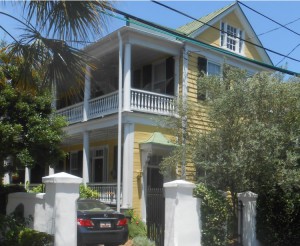
Last year (2014) saw 21 weeks over 300 and one week set a new record at 392 homes under contract. Through May of 2015, almost all of the weeks have seen well over 300 homes under contract each week and we’ve had four weeks over 400 for the first time ever. In April, there was a new record of 439 homes under contract. (Sorry to hit you with some many numbers, but I believe it tells quite a story.)
From 2005 to 2007, we sold between 14,000 and 18,000 homes in Charleston each year. Between 2008 and2011, we hardly broke the 9,000 sales mark. I believe that 2015 will see over 14,000 homes sold in Charleston again.
As for prices, we hit an all-time high median sales price for residential properties in 2007 of $210,000. That was well above where we should have been at that time, based on my regression analysis. So during the recession, we saw the median sales prices drop back to $183,000. And actually, the values of our homes dropped even more than that. In 2014, we came all of the way back and attained a new record of $221,000 for a median sales price.
However, dollar-per-square-foot prices in individual areas have not regained the 2005 to 2007 levels. Maybe I’ll explain that in a future article. Many people are now afraid that this seems like the crazy times of 2005 to 20077 when things got out of hand. While those prices were wrong in 2007, it has been a full eight years since then and I’ll explain in a future article why we’re actually undervalued right now. That’s enough numbers for you to chew on until next time.
Doug Holmes is a local Realtor with Keller Williams. He also provides markets analysis for a fee to several hundred local real estate agents. He has a bachelor’s degree in physics and math from the College of Charleston as well as a master’s degree in math from the college, where he still teaches a couple of statistics classes in the fall. Visit his website here.
GOOD NEWSJames Island library’s new location up for grabs
There’s been lots of back and forth over the last week about the location of the new James Island library, a story first featured in last week’s issue of Charleston Currents.
At issue is whether the new library, to be built with part of revenues from a $108 million bond referendum passed overwhelmingly by county residents, should be built in a location recommended by the library board of trustees or in a non-central island location on South Grimball Road backed initially by county council.
Some folks want the library to be built at the library board’s number one recommended location — on six acres of property along Dills Bluff Road just a stone’s throw away from the existing small Camp Road library. This location, on property gained for free by the James Island Public Service District, apparently will be discussed tonight during a commissioners’ meeting. At issue: Whether to sell it to the library.
The library board’s back-up location is an empty storefront next to the Bi-Lo grocery store on Folly Road. Like the Dills Bluff property, it’s centrally located and would serve a dense property. Advocates point to advantages, such as infrastructure already in place and cost savings. Detractors don’t want to use an old strip mall for a library.
The third location, which was not recommended by the library board, is on South Grimball Road next to James Island Elementary School. Backed by lots of people in the neighborhood, it is at the south end of the island, which would make it a haul for people north of the James Island Expressway. It’s also got half of the density of the other locations.
County council is expected to make a decision on June 16. More.
In other news:
Legislature’s Year of the Turtle. Some believe it’s pretty good news that the General Assembly got comparatively little done during its 2015 session. It hasn’t finished with a budget. It didn’t deal with billions of dollars of road needs. Ethics reform is still undone. The list goes on. Check out Statehouse Report’s analysis of what got done, what isn’t done and what’s lingering in the quicksand.
New president. Joseph D. Harbaugh, past dean of two law schools, is the Charleston School of Law’s new interim president. He will oversee day-to-day operations of the recently restructured law school.
“I am delighted Dean Harbaugh is willing to bring his decades of experience in legal education to the Charleston School of Law and I am excited at the opportunity to work closely with him to ensure a bright future for our school,” said Charleston School of Law Dean Andy Abrams. “Not only did he successfully lead two law schools for over 20 years, Dean Harbaugh has held key leadership positions in the American Bar Association and the Association of American Law Schools. He brings a remarkable breadth and depth of knowledge of legal education that will benefit all of us associated with the law school, as we move into our second decade of providing a high quality, hands-on legal education.”
Accreditation. The Advanced Wound Care Centers at Trident and Summerville Medical Centers have each earned a clinical hyperbaric medicine facility accreditation demonstrating their commitment to patient care and facility safety, according to a news release. This voluntary accreditation indicates Trident Health’s high performance standards in general and hyperbaric medicine programs.
FEEDBACKThe value of development
To the editor,
![]() You, like so many others, [Brack, “State needs to stop kowtowing to developers“] are quick to be critical of Kiawah and seldom look on the positive side of the development. No development in America is more tastefully done than Kiawah. The beautiful trees , green space, and beaches have been carefully protected. Where in America do you know of where deer, foxes , wild cats, turtles , alligators, etc coexist with humans.
You, like so many others, [Brack, “State needs to stop kowtowing to developers“] are quick to be critical of Kiawah and seldom look on the positive side of the development. No development in America is more tastefully done than Kiawah. The beautiful trees , green space, and beaches have been carefully protected. Where in America do you know of where deer, foxes , wild cats, turtles , alligators, etc coexist with humans.
When one rides through Kiawah it is difficult to see the homes , hotel, and other structures for the lush greenery that has been carefully protected. I am not certain of the numbers but Kiawah in general probably offers the area over 2,000 jobs. Not the highest paying but still jobs. The tax base for Charleston County is considerable and the citizens are, for the most part, considerate [and]law-abiding who offer minimal burden to community services. Unlike Volvo , Boeing , etc., there were no expensive state or community incentives offered. The golf courses are recognized as some of the best in the country. For 20 years, my son , Buddy, worked hard to create this masterpiece and I am proud of what he was able to accomplish.
– Dr. Charles Darby, Mount Pleasant, S.C.
Rant. Rave. Tell us what you really think. If you have an opinion on something we’ve offered or on a subject related to the Lowcountry, please send your letters of 150 words or less to: editor@charlestoncurrents.com. Our feedback policy.
June 8+: Frank novel, Carifest, more
 Frank novel event: Noon, June 10, Stars Restaurant, 495 King Street, Charleston. Best-selling author Dorothea Benton Frank will sign copies of her brand new book, All the Single Ladies, during a special luncheon, talk and signing by Blue Bicycle Books. The book is to be released the previous day. Tickets are $60 and include the book. More.
Frank novel event: Noon, June 10, Stars Restaurant, 495 King Street, Charleston. Best-selling author Dorothea Benton Frank will sign copies of her brand new book, All the Single Ladies, during a special luncheon, talk and signing by Blue Bicycle Books. The book is to be released the previous day. Tickets are $60 and include the book. More.
Palliative care: 3 p.m. to 5 p.m., June 10, Roper St. Francis Cancer Center board room, 2095 Henry Tecklenburg Drive, Charleston. Palliative care focuses on providing patients with relief from symptoms, pain and stress of any serious illness. Health care workers, patients and lawmakers will meet at this event to discuss the impact of public policy on patient quality of life issues during the “Quality of Life: Removing the Barriers of Care” educational forum. More info.
Knife-sharpening. The Coastal Cupboard will hold a knife-sharpening event from June 11 to 14 to benefit East Cooper Meals on Wheels. $1 per knife. More.
(NEW) Charleston Carifest Caribbean Carnival: June 11-14, Charleston. You can celebrate 10 years of Caribbean American Heritage months at lots of events over four days. Starting at 7 p.m. June 12 is a Mardi Gras Party at 1142 Morrison Drive that offers Halloween in June. On June 13 is a 3 p.m. street parade from John Street to Brittlebank Park, where there’s also a festival that goes on all afternoon. Learn more here: www.Charlestoncarifest.com.
(NEW) Juneteenth. 2 p.m. to 5 p.m., June 20, Jenkins Institute, 3923 Azalea Drive, North Charleston. You can celebrate Freedom Day during an annual celebration that commemorates the day that the last enslaved Africans in the United States finally learned of their freedom. There will be drumming, dancing, face-painting, games and lots of food to eat. More: CharlestonGood.com.
Book sale: June 19 to 21, Main Library, 68 Calhoun St., Charleston. The Charleston Friends of the Library will present its second annual book sale of the year with great bargains, good books and a chance to support your library system. More info.
Shaking a leg. The Folly Beach Pier is set to have more Moonlight Mixers throughout the summer starting at 7 p.m. A DJ will spin great old tunes to keep your feet moving. Other dates are June 19, July 24, Aug. 21 and Sept. 18. In Mount Pleasant, the Shaggin’ on the Cooper series will be held June 13, July 18, Aug. 15 and Sept. 12. Click here for more.
Fishing tournaments. The county’s monthly fishing tournaments kickoff in May with contests at the Mount Pleasant and Folly Beach piers. Both cast-off tournaments feature several awards and prizes for anglers from 3 years old to seniors. Tournaments in Mount Pleasant are slated for June 27, Sept. 5 and Oct. 3. Tournaments are to be held on Folly Beach Pier on June 20, July 18 and Aug. 15. More info.
Uncle Sam Jam. You can celebrate July 4 at the Mount Pleasant Pier with this annual Independence Day party by Charleston County Parks. Gates open at 7 p.m. with music by Permanent Vacation starting an hour later. Food and drink will be available. Limited spaces will be sold for the Uncle Sam Jam, so reserve your spot soon! Admission is $10, or $8 in advance for residents of Charleston County. More: CharlestonCountyParks.com
Natural history exhibit: Through Aug. 10, 2015. “From Land to Sea: 35 Million Years of Whale Evolution” will be featured in The Charleston Museum’s lobby gallery with displays of whale fossils from millions of years ago. There’s limited availability for an overview by Natural History Curator Matthew Gibson on opening night. Learn more.
Cool shark exhibit. The newest exhibit at the S.C. Aquarium is now open and allows visitors to touch sharks and rays in an innovative outdoor exhibit. “Shark Shallows” features a 20,000-gallon touch tank designed for sharks, rays and skates. Learn more here.
Bird walks: 8:30 a.m. to noon, every Wednesday and Saturday. This is the time of year that a great variety of migrating birds fly through the Lowcountry so what better time to take part in one of the regular early morning bird walks at Caw Caw Interpretive Center in Ravenel. Pre-registration is suggested. Cost is $5. Walks also are conducted on James Island and Folly Beach. Learn more online.
If you have an event to list on our calendar, please send it to editor@charlestoncurrents.com for consideration. The calendar is updated weekly on Mondays.
REVIEWWolf in White Van
A novel by John Darnielle
![]() Sean Phillips is reclusive due, in large part, to a severe injury he sustained as a teenager. His main contact with the world around him is through Trace Italian, the mail-order role-playing game he created and runs. Troubles arise for Sean when two players, Carrie and Lance, switch their playing from the game world to the real world. As Sean’s story, along with the story of Carrie and Lance, unfolds, the reader is taken on a riveting journey backward through Sean’s life.
Sean Phillips is reclusive due, in large part, to a severe injury he sustained as a teenager. His main contact with the world around him is through Trace Italian, the mail-order role-playing game he created and runs. Troubles arise for Sean when two players, Carrie and Lance, switch their playing from the game world to the real world. As Sean’s story, along with the story of Carrie and Lance, unfolds, the reader is taken on a riveting journey backward through Sean’s life.
Best known as the frontman for the band The Mountain Goats, John Darnielle has written a debut novel that really strikes a chord with the reader. Like the movie Memento, the book begins at the end of the story and works its way backward in time. For a story that you start out knowing the ending, there sure are some interesting twists and unexpected turns!
Wolf in White Van is packed full of thought-provoking circumstances and emotional conundrums. It is an excellent and stimulating book that anyone could enjoy. It will especially appeal to people who like contemporary mystery and role-playing games.
— Ashley Dowdy, Main Library, Charleston, S.C.
 Find this and similar titles from Charleston County Public Library. This item available as a book. To learn more or place a hold, visit www.ccpl.org or call 843-805-6930.
Find this and similar titles from Charleston County Public Library. This item available as a book. To learn more or place a hold, visit www.ccpl.org or call 843-805-6930.
Where’s this mailbox?
Hanahan photographer Chuck Boyd sent along this photo wondering whether people knew where this creative mailbox was. First person with the correct answer wins a pair of vouchers for any RiverDogs’ game. Send your guess — and your name, hometown and contact information — to editor@charlestoncurrents.com.
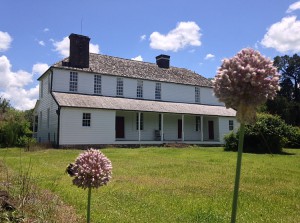 Hats off to Herb Frazier of Charleston, Chris Brooks of Mount Pleasant and Naomi Blumenthal of Greenwood Lake, N.Y., for guessing last week’s mystery photo as a view of Middleburg Plantation.
Hats off to Herb Frazier of Charleston, Chris Brooks of Mount Pleasant and Naomi Blumenthal of Greenwood Lake, N.Y., for guessing last week’s mystery photo as a view of Middleburg Plantation.
“It is the oldest wooden structure still standing in South Carolina, built around 1697-99 by Benjamin Simons,” Frazier writes. Blumenthal, a Charleston native, noted the old plantation house was visited by the Marquis de Lafayette during the Revolutionary War. Also of note: “British soldiers occupied it and played mumblety peg with the columns on the front porch.”
- Have a photo that will stump Charleston Currents’ readers. Send it to: editor@charlestoncurrents.com.
All Saints Parish
S.C. Encyclopedia | Established on March 16, 1778, All Saints Parish comprised the Waccamaw Neck of what came to be Horry and Georgetown Counties. In 1721 the peninsula became part of Prince George Winyah Parish, but separated from the rest of the parish by the Waccamaw River, it remained isolated and sparsely settled for decades. Because they could only reach the parish church by water, which was “very hazardous in blowing weather,” the inhabitants of Waccamaw Neck constructed a chapel of ease on Pawleys Island circa 1736.
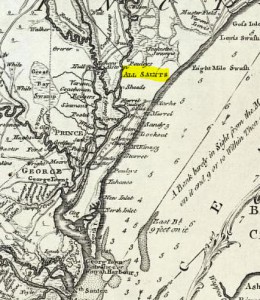 On May 23, 1767, the Commons House of Assembly created All Saints Parish, granted it two representatives, and the chapel became the new parish church. King George III had recently prohibited the enlargement of colonial legislatures, however, and three years later he disallowed the parish. Shortly after South Carolina declared its independence from Britain, All Saints was reestablished in 1778.
On May 23, 1767, the Commons House of Assembly created All Saints Parish, granted it two representatives, and the chapel became the new parish church. King George III had recently prohibited the enlargement of colonial legislatures, however, and three years later he disallowed the parish. Shortly after South Carolina declared its independence from Britain, All Saints was reestablished in 1778.
With the introduction of tidal rice culture in the mid-eighteenth century, the Waccamaw River, which had so long been a barrier to the development of the Neck, quickly became its greatest asset. Plantations sprang up along its banks, and by 1810 African slaves made up nearly ninety percent of the parish population.
On the eve of the Civil War, per capita wealth for the free residents of All Saints was among the highest in the nation. With 1,092 slaves, Joshua John Ward, a rice planter and warden of All Saints Church, was one of the largest slaveholders in the entire South. With the abolition of the parish system in 1865, All Saints Parish became part of Horry and Georgetown Counties.
– Excerpted from the entry by Matthew A. Lockhart. To read more about this or 2,000 other entries about South Carolina, check out The South Carolina Encyclopedia by USC Press. (Information used by permission.)
OUR UNDERWRITERS
Charleston Currents is an underwriter-supported weekly online journal of good news about the Charleston area and Lowcountry of South Carolina.
- Meet our underwriters
- To learn more about how your organization or business can benefit, click here to contact us. Or give us a holler on the phone at: 843.670.3996.
SUBSCRIBE FOR FREE
Subscriptions to Charleston Currents are free.
- Click here to subscribe.
- Unsubscribe. We don’t want to lose you as a reader of Charleston Currents, but if you must depart, please click here.





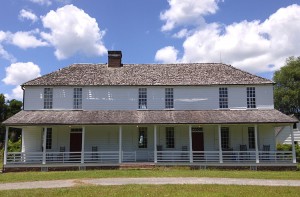
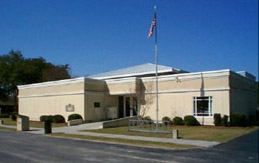
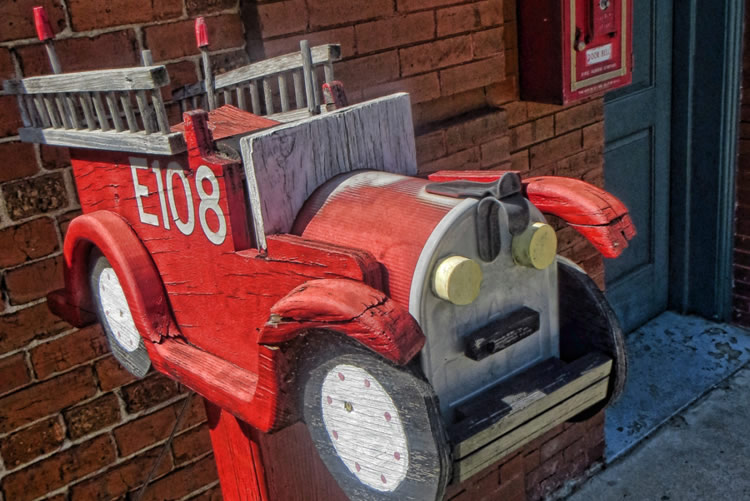

 We Can Do Better, South Carolina!
We Can Do Better, South Carolina!
























